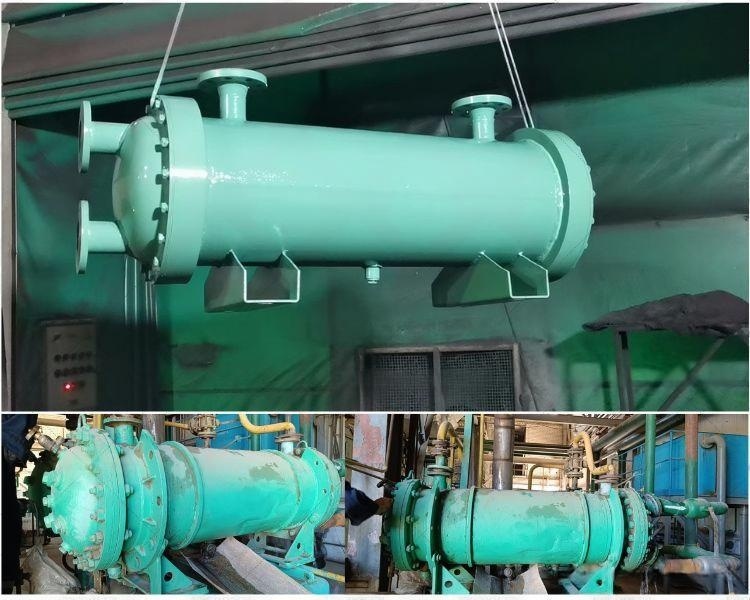Materials used in air-cooled oil coolers are selected based on thermal conductivity, durability, weight, and corrosion resistance. Here’s a breakdown of the key components and their typical materials:
. Core / Heat Exchanger
a) Finned Tubes or Cooling Plates
- Primary Material:Aluminum (most common)
- Why? Lightweight, excellent thermal conductivity (~200 W/m·K), corrosion-resistant (with proper coatings), and cost-effective.
- Alternative: Copper (higher conductivity ~400 W/m·K but heavier and more expensive; used in high-performance applications).
b) Fins
- Material:Aluminum (typically)
- Thin, corrugated fins maximize surface area for air cooling.
- Sometimes coated with anti-corrosion layers (e.g., epoxy or anodized).
c) Headers / Manifolds (Oil Flow Channels)
- Material: Aluminum (common) or Steel (for heavy-duty applications).
- Sealing: Rubber or silicone gaskets prevent leaks.
2. Housing / Frame
- Material:
- Aluminum (lightweight, corrosion-resistant).
- Stainless Steel (for harsh environments, e.g., marine or industrial).
- Mild Steel with Powder Coating (budget option, but prone to rust if uncoated).
3. Inlet & Outlet Fittings
- Material:
- Brass (resists corrosion, durable for threaded connections).
- Steel (with Zinc/Nickel Plating) – For high-pressure hydraulic systems.
- Aluminum (lightweight, common in automotive applications).
4. Cooling Fan (If Applicable)
- Blades: Plastic (PA6-GF30, Nylon) or Aluminum (for high-temp applications).
- Motor Housing: Aluminum or Stainless Steel (heat and corrosion resistance).
5. Protective Grille / Mesh
- Material:
- Stainless Steel (rust-proof, durable).
- Powder-Coated Steel (cheaper but less corrosion-resistant).
6. Gaskets & Seals
- Material:
- Nitrile Rubber (NBR) – Oil-resistant, common in automotive.
- Viton (FKM) – For high-temperature applications (e.g., turbocharged engines).
- Silicone – Flexible and heat-resistant.
. Thermal Bypass Valve (If Present)
- Body: Brass or Aluminum.
- Spring & Seals: Stainless Steel + Viton.
Material Selection Factors:
- Thermal Conductivity – Aluminum > Steel > Plastic.
- Weight – Aluminum is preferred in automotive/aerospace.
- Corrosion Resistance – Stainless steel > Aluminum > Mild steel.
- Cost – Aluminum balances performance and affordability.
Comparison Table
| Component | Preferred Material | Alternative Material | Reason |
| Finned Tubes | Aluminum | Copper | Lightweight, good heat transfer |
| Fins | Aluminum | Copper (rare) | High surface area, corrosion-resistant |
| Headers | Aluminum | Steel | Durability under pressure |
| Housing | Aluminum / Stainless | Coated Steel | Corrosion resistance |
| Fittings | Brass | Steel (plated) | Leak-proof, durable |
| Fan Blades | Plastic (PA6-GF30) | Aluminum | Lightweight, efficient airflow |
| Gaskets | Nitrile Rubber (NBR) | Viton (FKM) | Oil & heat resistance |
Special Cases:
- Aerospace Oil Coolers: Use titanium or high-grade aluminum for extreme weight savings.
- High-Pressure Hydraulic Systems: Use steel headers for burst resistance.
- Marine Applications: Stainless steel or marine-grade aluminum to resist saltwater corrosion.
